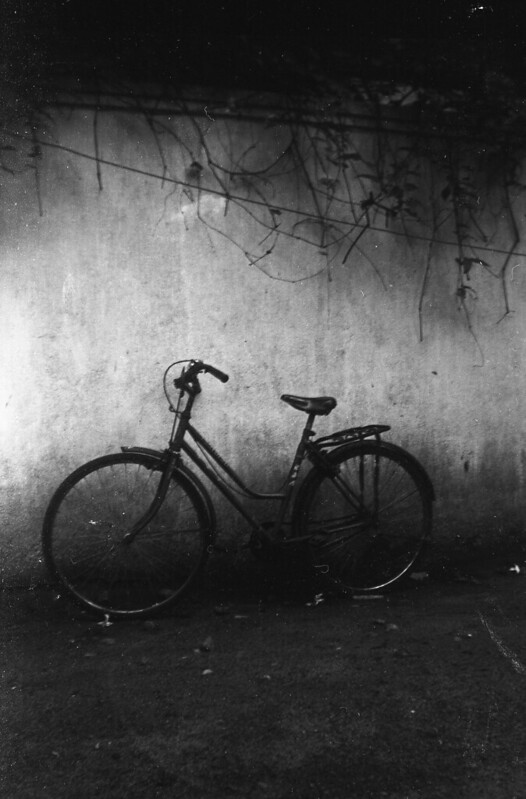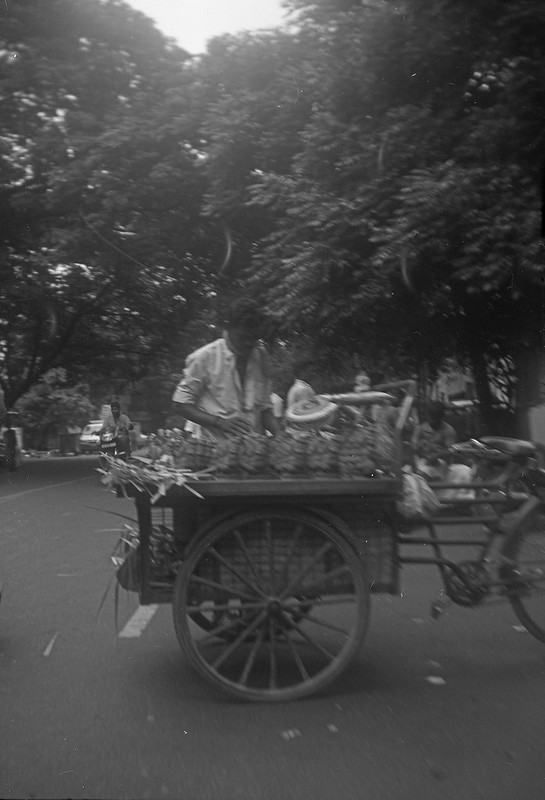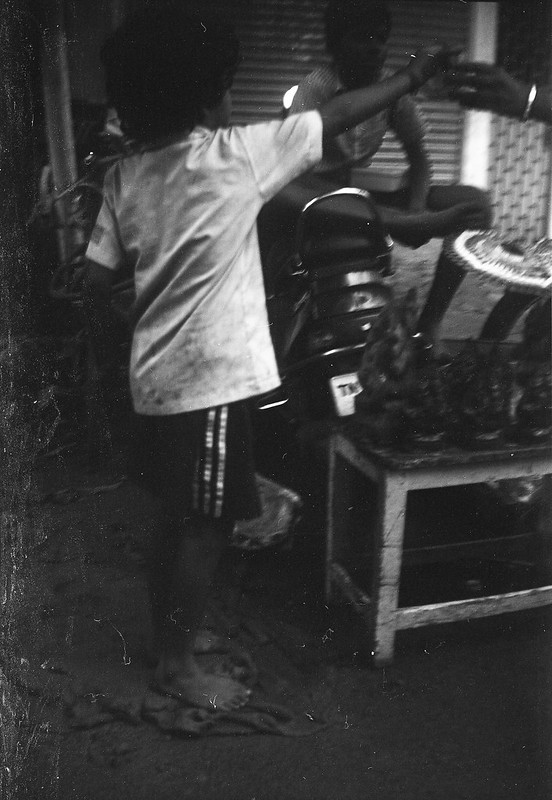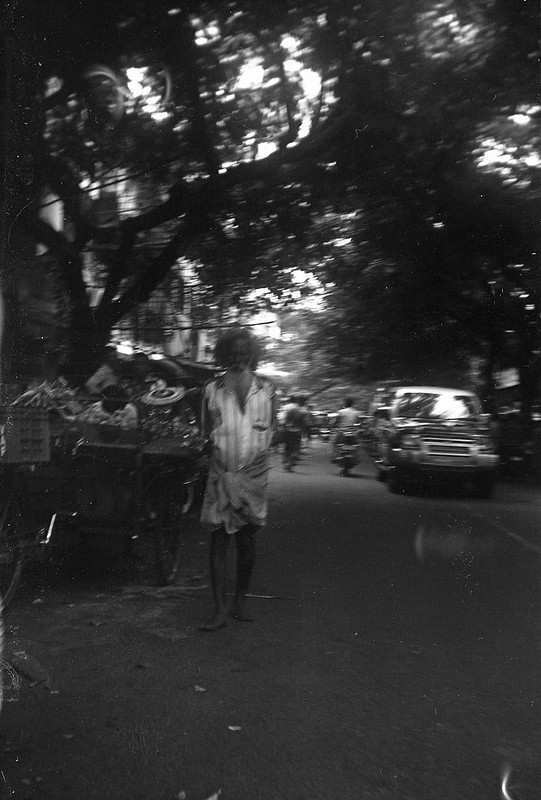This weekend, I set out to try and cut the expenses for my hobby a bit by learning to process the film myself. I ordered the chemicals for both black/white and color film processing a few weeks ago, along with a developing tank from the 1950s I picked up on eBay for 3 bucks.
The question was, should I try and develop some of the rolls I have sitting around waiting to either go out, or go and shoot a few test rolls or two? I opted for the latter, just in case. I have a bunch of 120 format, black and white Ilford ASA 50 film lying around, so I grabbed an old (1940s) box camera – an ANSCO B2 Cadet. This camera is designed to be held with two hands at waist level – with a relatively slow shutter speed, it’s important to hold it steady. Instead, what I did was to carry it in one hand and flick the shutter with an index finger, pointing the camera roughly in the right direction. So a number of the photos were either blurry or poorly framed – but the benefit was that I could take pictures without anyone really recognizing that I had a camera – it just looks like a black box in my hand.
Given that background, you can assume there will not be any Pulitzer Prize winners in this batch of photos! Today was a special day in Chennai, however, and I’ll explain what you’re seeing in reference to today and Indian culture. For any techies that might be interested in the details of the film processing, I’ll leave that to the end.
The first one I took is also one of my favorites in today’s bunch. Nothing more than a bicycle leaning against the wall.
This is another bicycle – I’d have preferred it more to the right – with three wheels and a flat “bed” for carrying cargo. They are quite common in Chennai. Yesterday this spot was occupied by a half dozen teenagers who had just used this bike to unload wet clay, which they were dividing into small “portions.”
Because today is the start of Ganesha Chathurthi, also known as Vinayaka or Vinaygar Chathurthi. This ten- or eleven-day festival celebrates the (re-)birth of Ganesha. Here, a local business owner has prepared a special kolam to wish passersby a happy holiday.
If you’re wondering what a kolam is, I wrote about it here. But anyway, as I understand it, many Hindu people will install a Ganesha idol in their home. They will make offerings to Ganesha for three days (it’s really much more complicated), and typically on day 5, 7, 9, or 11 of the festival (I’m told days 5 and 7 are the most common but everyone seems to have a different opinion) the idol will be immersed in water. For example, one friend mentioned her family drops him in the well, leading to good fortune at the well, which is key for the family. For environmental reasons, more of these idols are being made from clay. Others are made from plaster and can be quite huge – and in cities like Chennai, the procession to bring one of these large community idols to the sea can number in the tens of thousands.
So all of that background will explain why our shopping street was crazy busy today, with many additional vendors selling these small idols. For example:
…and even the youngest entrepreneurs get in on the action:
While I was threading my way through foot- and vehicular traffic, I also snapped a shot of this elderly bearded gentleman:
And I’ll finish off with my “other favorite” picture from today – from three rolls of 120 film (24 exposures total):
Now for the technical parts.
Why the box camera, besides the fact that it’s not very obvious?
There’s a “Sunny 16 Rule” in photography that just works out perfectly with that particular camera and the film speed (50) I had available. The “Sunny 16” rule says that on a sunny day, at f/16, your shutter speed should match your film speed. The camera’s shutter speed is 1/60th of a second, and the film speed is 50 – so on a sunny day f/16 would be the right aperture when the other two (almost) match. Today was a bit overcast, so the Cadet’s f/11 is just about right. Unfortunately, under the trees it was a bit darker than “overcast”, so the pictures did mostly turn out a bit dark.
The camera should properly be held with two hands at waist height, and the photographer looks down through a finder that reflects through the front – in both portrait and landscape shots. Holding the camera with one hand is more subtle, but over half the shots were blurry.
For developing I used Kodak’s D76 developer, Fomacitro stop bath, and Kodak’s fixer. I used the advice on this guy’s website, along with some of the tables online for Ilford Pan X 50 film. And I decided to “split the difference” and start out with 7 minutes 30 seconds for the developer, 1 minute for the stop bath, and 9 minutes for the fixer. The negatives looked like they were producing dark photos (the negatives were very light), so the third roll I cut to 7 minutes. I realized afterward that I should have gone 30 minutes in the other direction – after all, they’re negatives, and a darker negative equals a lighter photo. I kept everything at 20 degrees Celsius, but noticed afterward the label on the film actually says ASA 50 / 18 degrees. Is that a processing guideline?
I’m not really sure why some of the negatives have damage along the left side – could this be from the film touching together when I removed it from the spool? Or maybe not being spooled correctly?
No one was more surprised than I when the first roll came out and seemed to show decent images. Next: color processing.









